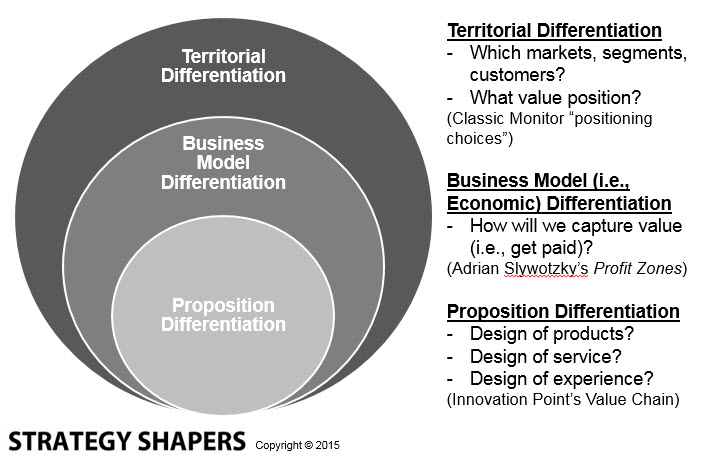After a couple of weeks off from blogging it’s time to get back to our theme of bad strategic advice.
We started this discussion talking about the perils of the famous advice “focus”. We then explored the wisdom (or lack thereof) of avoiding price based competition. Now let’s take on that all-purpose bromide: Differentiate.
You are not alone if you have grown impatient with that most quintessential of all strategic advice: “you have to differentiate.” Well, of course, don’t we all?
There’s even a book out there with the title, Differentiate or Die. I can’t comment on the book since I haven’t read it. But isn’t the insight damn obvious?
Every business is born “different.” Either it brings to market a new and innovative way to get at something … the really different. Or it provides a better, cheaper, smarter alternative to those currently in the market … the merely different.
The trick … the real conundrum … is how to differentiate. Too often those of us in the strategy making business commit malpractice because we leave this really hard question as follow-up. The client audience says: “Ah yes, differentiate. Brilliant!” The consultant says: “Okay, go figure it out.” The most important work is consigned to a flip chart or post-it note.
Strategic change … the surfacing of options and pathways to being profitably different … is too important to allow this.
Experience and process flowcharts simply aren’t enough. You have to dig and discover. You have to be willing to tear the scabs off current assumptions and beliefs. And you have to be ready for the heavy organizational lifting of moving people and assets into place to take on the new direction.
Entrepreneurs do this as easily a little children learn to play. Established businesses with their many cultural, organizational and reward system hang-ups have a tougher time. They are chock-full of “yes, but’s”. Which is probably why high priced strategy consultants throw the challenge back in their face, take their fee, and go home.
Business teams or executive leaders think they can get away with investing a day converging on goals and aspirations or brainstorming new market moves. The real question is how many days, weeks or months are you willing to explore, study and test acts of real difference?
Differentiation can and probably needs to happen on at least three different levels: Territorial, Economic and Propositional. Working on one level, say a specific segment of customers or a unique method of financing a transaction, simply doesn’t get most firms far enough to make hay out of change.
Sadly, the various schools of strategy tend to emphasize one type of differentiation, not all three. The Michael Porter view tends toward the territorial. Technical or innovation views tend to emphasize the propositional. Investors and incubators cue on the economic. Some will also argue that it depends on the life stage of the organization, that a General Motors can do one kind of strategy while a Silicon Valley Start-Up does another.
Well, it may be harder and more involved, but great companies do all three. They utilize what we call Differentiation Radar and understand that being purposely and intelligently different on several levels is the key to their long term success:

